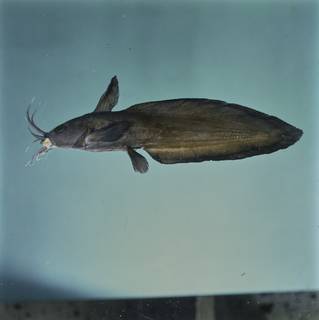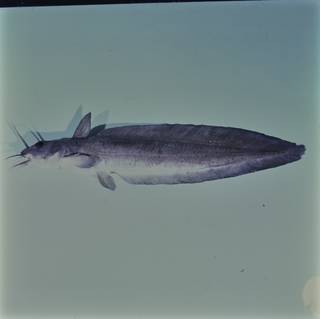WoRMS taxon details
Plotosidae Bleeker, 1858
- Genus Anodontiglanis Rendahl, 1922
- Genus Cnidoglanis Günther, 1864
- Genus Euristhmus Ogilby, 1899
- Genus Neosiluroides Allen & Feinberg, 1998
- Genus Neosilurus Steindachner, 1867
- Genus Oloplotosus Weber, 1913
- Genus Paraplotosus Bleeker, 1862
- Genus Plotosus Lacepède, 1803
- Genus Porochilus Weber, 1913
- Genus Tandanus Mitchell, 1838
- Genus Anyperistius Ogilby, 1908 accepted as Tandanus Mitchell, 1838
- Genus Choeroplotosus Kner, 1866 accepted as Cnidoglanis Günther, 1864
- Genus Copidoglanis Günther, 1864 accepted as Tandanus Mitchell, 1838
- Genus Eumeda Castelnau, 1878 accepted as Neosilurus Steindachner, 1867
- Genus Eurithmus accepted as Euristhmus Ogilby, 1899 (misspelling)
- Genus Lambertia Perugia, 1894 accepted as Neosilurus Steindachner, 1867
- Genus Lambertichthys Whitley, 1938 accepted as Neosilurus Steindachner, 1867
- Genus Neoplotosus Castelnau, 1875 accepted as Cnidoglanis Günther, 1864
- Genus Ostophycephalus Ogilby, 1899 accepted as Cnidoglanis Günther, 1864
- Genus Plotoseus accepted as Plotosus Lacepède, 1803 (misspelling)
- Genus Plotossus accepted as Plotosus Lacepède, 1803 (misspelling)
- Genus Plutosus accepted as Plotosus Lacepède, 1803 (unaccepted > misspelling - incorrect subsequent spelling)
- Genus Potosus accepted as Plotosus Lacepède, 1803 (misspelling)
marine, brackish, fresh, terrestrial
Not documented
Distribution Indian Ocean and western Pacific from Japan to Australia. Anguilliform. Caudal pointed or bluntly rounded. Barbels usually...
Distribution Indian Ocean and western Pacific from Japan to Australia. Anguilliform. Caudal pointed or bluntly rounded. Barbels usually 4 pairs. Adipose fin absent. Caudal fin rays may be far advanced along dorsal. Lower procurrent caudal rays confluent with long anal fin. Branchiostegal rays 7-14. Some can cause painful injury. Marine species = ISSCAAP 39; freshwater species = ISSCAAP 13. [details]
Froese, R. and D. Pauly. Editors. (2025). FishBase. Plotosidae Bleeker, 1858. Accessed through: World Register of Marine Species at: https://www.marinespecies.org/aphia.php?p=taxdetails&id=154425 on 2025-12-08
![]() The webpage text is licensed under a Creative Commons
Attribution 4.0 License
The webpage text is licensed under a Creative Commons
Attribution 4.0 License
Nomenclature
basis of record
Fricke, R., Eschmeyer, W. N. & Van der Laan, R. (eds). (2025). ECoF. Eschmeyer's Catalog of Fishes: Genera, Species, References. <em>California Academy of Sciences. San Francisco.</em> Electronic version accessed dd mmm 2025., available online at http://researcharchive.calacademy.org/research/Ichthyology/catalog/fishcatmain.asp [details]
Taxonomy
taxonomy source
Van Der Laan, R.; Eschmeyer, W. N.; Fricke, R. (2014). Family-group names of Recent fishes. <em>Zootaxa.</em> 3882(1): 1-230., available online at https://doi.org/10.11646/zootaxa.3882.1.1 [details] Available for editors  [request]
[request]
 Present
Present  Inaccurate
Inaccurate  Introduced: alien
Introduced: alien  Containing type locality
Containing type locality
Unreviewed
Distribution Indian Ocean and western Pacific from Japan to Australia. Anguilliform. Caudal pointed or bluntly rounded. Barbels usually 4 pairs. Adipose fin absent. Caudal fin rays may be far advanced along dorsal. Lower procurrent caudal rays confluent with long anal fin. Branchiostegal rays 7-14. Some can cause painful injury. Marine species = ISSCAAP 39; freshwater species = ISSCAAP 13. [details]


